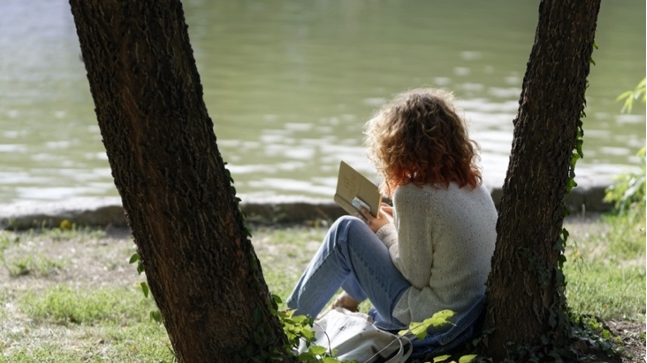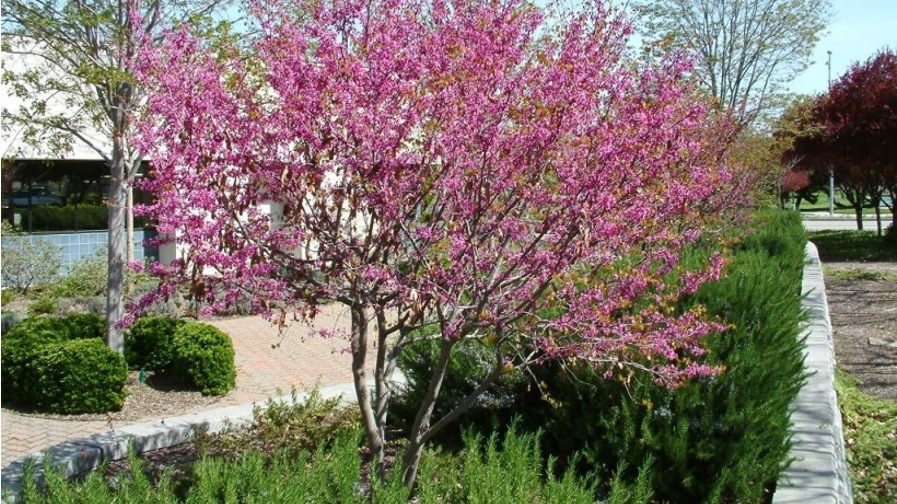Trees & How to Choose Them

Use our PLANT LIST: > TREES FOR BACKYARDS AND PATIOS
These trees thrive in Marin and are well-suited to the typical backyard setting. If you have specific criteria and characteristics in mind, use this helpful TREE SELECTION TOOL.
Trees are garden investments.
Choosing a tree takes careful planning and research. Some species live for hundreds of years, so what you plant today could affect generations to come. The ultimate goal is for a tree to fit its intended location, provide benefits such as shade and screening, and not cause unintended problems years later.
Important factors to consider when choosing a tree:
The basics: sun, soil, water, climate
Like all plant purchases, be sure your cultural conditions match the needs of your tree. If you are planting a tree in a lawn, be sure it can take regular water. If you want to conserve water, choose a tree that will not require much or any supplemental water when it's mature.

Size
• Identify the ideal height and width at maturity. This is a common oversight. Don't buy a tree that will become a pruning headache or, worse, will require expensive removal in a few years because it's too big or blocks a neighbor's view. Trees that look "cute" in 1-gallon containers can grow into 100-foot behemoths. Know what you're planting!
• Large trees are typically too massive for small gardens. If you have room for a full size oak tree, magnolia, or other large species, then go for it. If not, stick with a smaller species.
• "Patio trees" are generally on the smaller side and offer positive attributes such as beautiful flowers, tasty fruit, fall foliage, or attractive bark.
Function
Here are some jobs trees perform:
• Cast shade in summer but let in light in winter - A deciduous tree is likely the best choice.
• Provide shade near a pool – Choose a tree with large leaves, which are easier to scoop out of pools than tiny leaves.
• Provide shade for sitting underneath - Be careful about choosing a tree with large cones or fruit that could fall on unsuspecting heads or even cause injury.
• Screen out an unsightly view - Evergreen is probably a good choice.
• Enhance an attractive view - Be sure it will not outgrow the space, block your view, and create excessive maintenance.
• Cover a walkway – Avoid trees with lots of dropped litter.
• Line a street – Avoid trees with roots that raise pavement or drop excessive litter.
• Make a statement at the entrance to your home – Choose a tree that has four-season appeal.
Form
• There are numerous tree shapes. Do you want a round dome? Upright column? Weeping? Broad canopy?
Growth rate
• How fast a tree grows can impact its stability and longevity
Example: some eucalyptus trees grow quickly, but are reputed to be "widow makers" because they can drop enormous branches for no obvious reason.
• Slow-growing trees tend to live longer than fast-growing trees.
Location
• In the ground or in a container: Be sure the intended location will not be inhospitable. Some trees don't mind being planted in a large pot or in the middle of a stone patio, while others may struggle.
• Look up: will power lines be a problem?
• Look down: will roots be a problem with underground utility lines or pipes?
Maintenance
• Who will handle care and pruning?
• Will leaf litter be an issue?
Nice-to-have
• Do you want flowers?
• Fall leaf color?
• Fragrance?
• Edible fruit?
• Interesting bark?
• What else?
